Embryo development of mothers womb
The embryonic stage happens first and lasts through week 10

A sperm swims into a mature egg released from the ovary into the fallopian tube and fertilizes the egg.
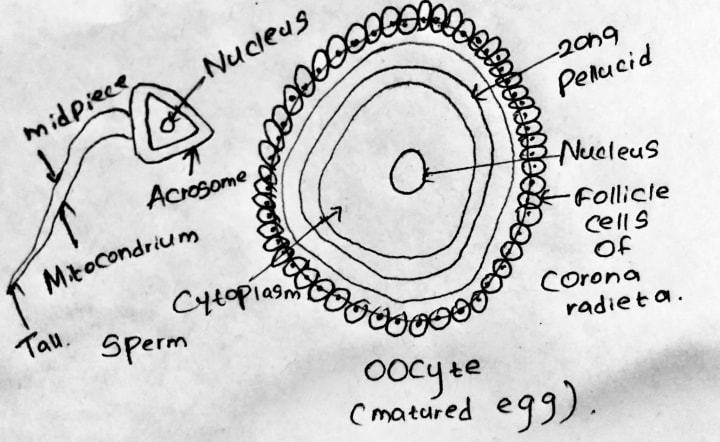
🍀Zona pellucid - a glycoprote
Corona radieta -the outer part of the egg
🍀Fallic cells -cells in the outermost layer of the egg
☘️Acrosome -head of the sperm
There, the corona radiata of the mature egg attracts the sperms that come to the fallopian tube. The enzyme in the acrosome of the sperm pierces the shell of the zona pellucid of the spermatozoa. Then the oocytes and sperm plasma and nuclei fuse.
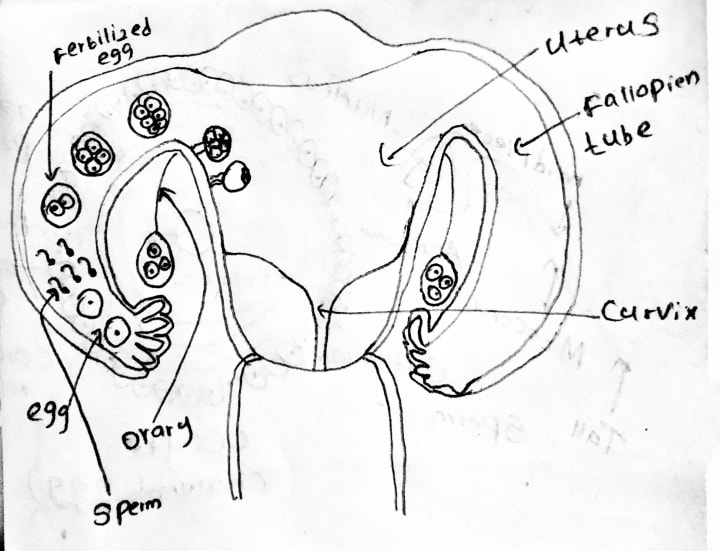
After an egg is fertilized by only one sperm, the glycoproteins of the zona pellucid press against each other to prevent other sperm from entering the follicle and impeding the sperm into the membrane. then the fetilze egg moves along the fallopian tube to the uterus.

🌿Egg to zygote -24hours
🌿Zygote to 2cells -24hours The two cells are connected by tight junctions
🌿2cells to4cells -48hours
🌿4cells to 16cells-72hours Surrounding the morula is the pellucid zone.
Then a blastocyst is formed. blastocyst is formed only in mammals and blastula is formed in other animals
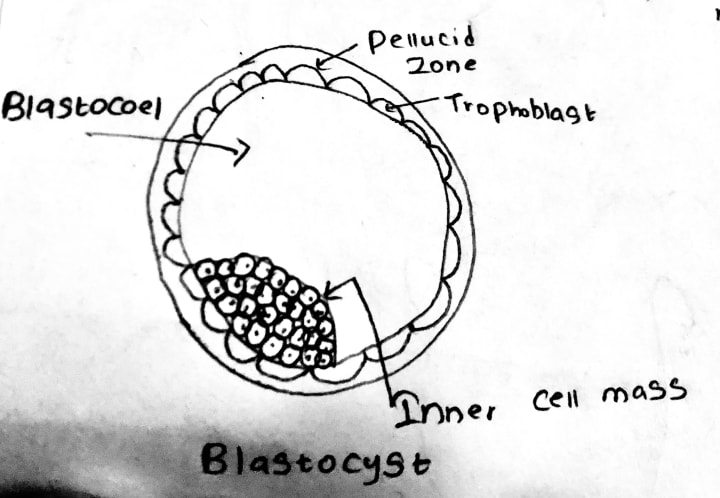
☘️Trophoblast -The outermost cell layer of blastocyst
☘️Blastocoel -blastocyst cavity
☘️Inner cell mass- inner cell mass made hypoblast and epiblast
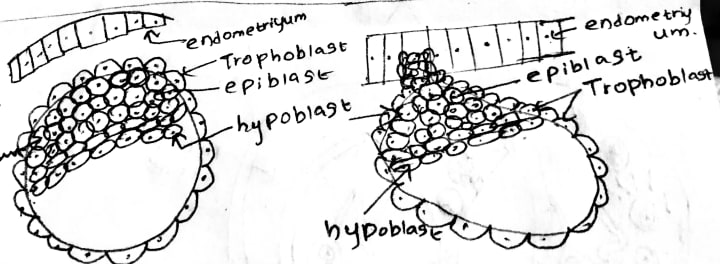
☘️ Hypoblast -This is what makes the yolksac
☘️Epiblast -this is what makes the three germ layers
Later, the blastocyst is attached to the endometrium( the inner lining of the uterus) by trophoblasts.
Then The hypoblast and epiblast form the bilaminar disc
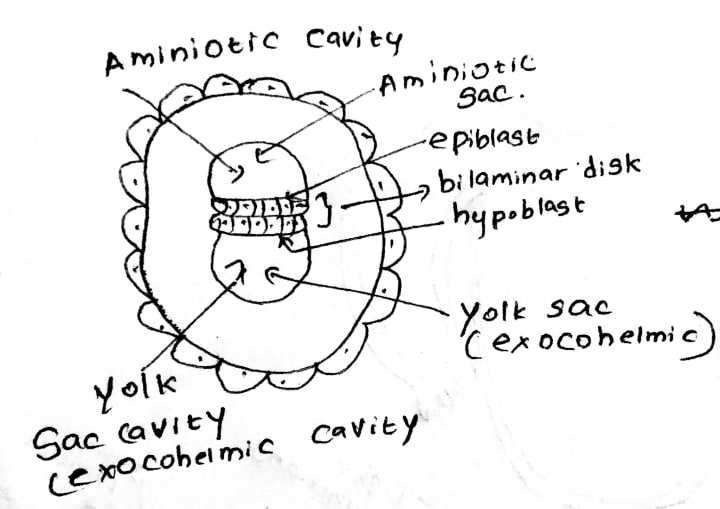
☘️Aminiotic cavity-The Upper cells of epiblast forms the amniotic cavity
☘️Yolk sac (exocohelmic ) - lower cells of hypoblast made yolk sac
☘️Bilaminar disc-The cell layers between amniotic cavity and yolk sac
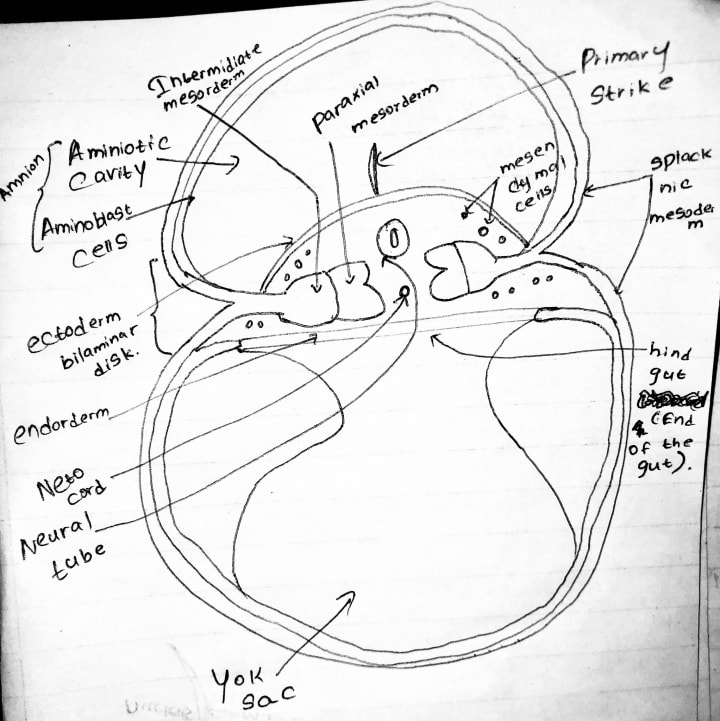
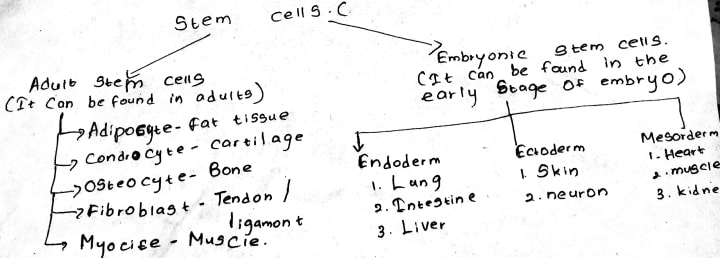
After that the bilaminar disk separates. Epiblast forms three germ layers.
(Adultstem cells also known as mesenchymal cells.)
Three germ layers:🌲endorderm -As the cells of the epiblast move to the primary strike, they slide into the hypoblast and form the endoderm.
🌲Mesorderm-Epiblast cells move from the endoderm to the epiblast layer to form the mesorderm
🌲Ectorderm-The remaining epiblast cells made ectoderm.
☘️Gonadal ridge (genital ridge)-Primary germ cells migrate through the hindgut and form gonads in the gonadal ridge.
☘️Primary strike-There is a primary strike on the surface of the epiblast. The primordial streak results in bilateral symetry during embryo production. Occurs at the onset of gasterlation.
☘️Aminioblast-cells surrounding the amniotic cavity
☘️Exocohelmic membrane-membrane surrounding theyolk sac
🌱🌱Neural tube

Ectoderm made the neurul tube
🌱🌱Mesorderm
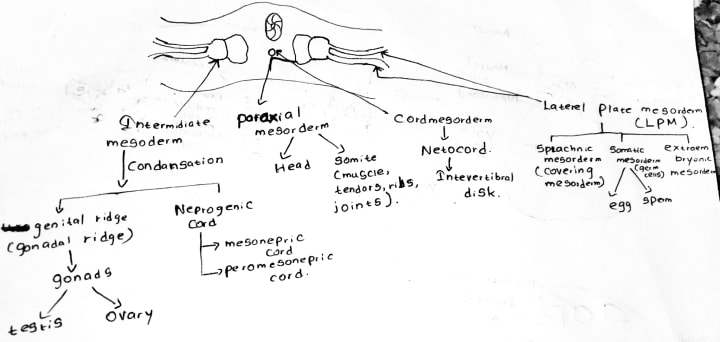
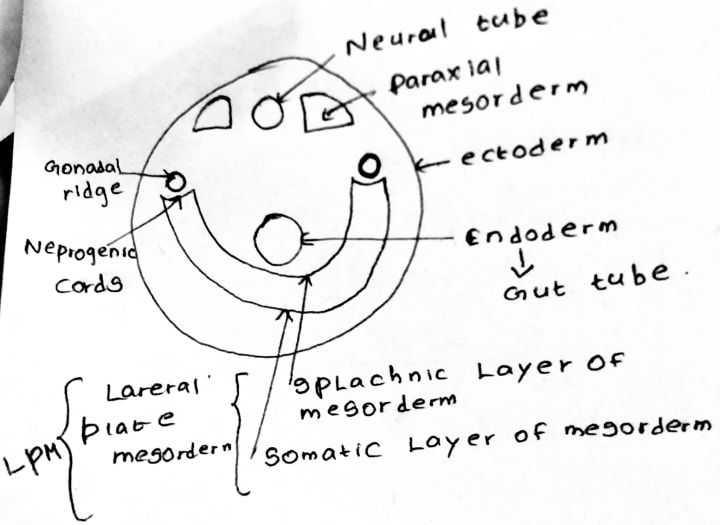
🌱🌱how primary germ cells come to genital ridge(gonadal ridge )?

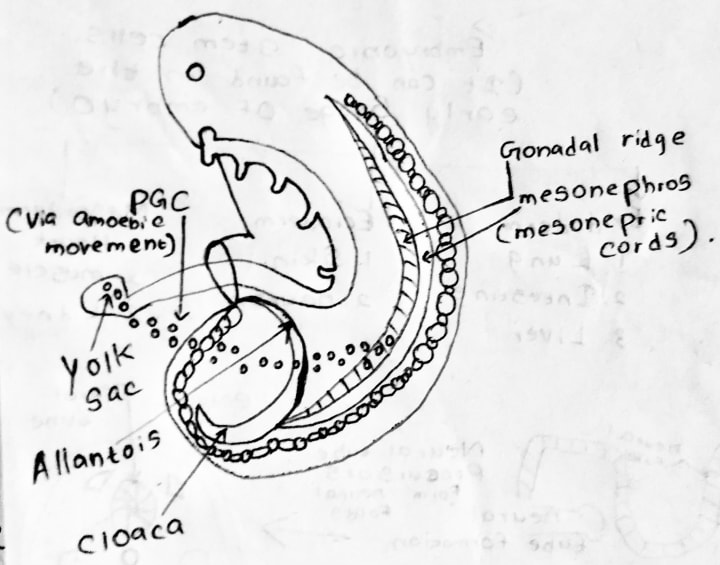
☘️PGC-primordial germ cells
PGC made by lateral plate mesorderm(LPM)
The pgc travels to the gonadal ridge through the hindgut via amoebic movements.
☘️Cloaca -The cloaca divides into the anus (the end of the stomach) and the urogenital sinus to form the anus and genitalia. .
☘️allentois -In the human embryo, it is just a vestige of the large, saclike structure that is used by the embryos of many mammals, birds, and reptiles as a major respiratory organ and repository for urinary wastes
🌱🌱embryo development at uterine cavity
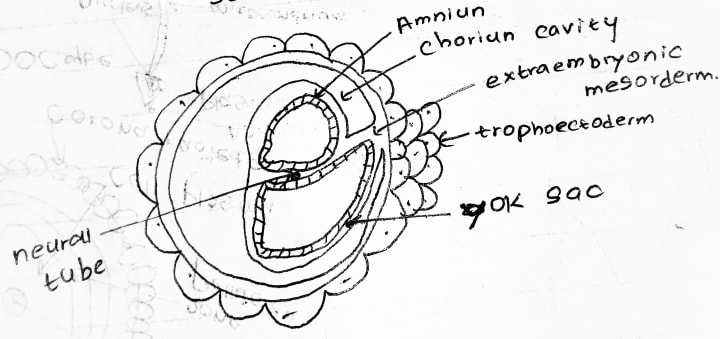
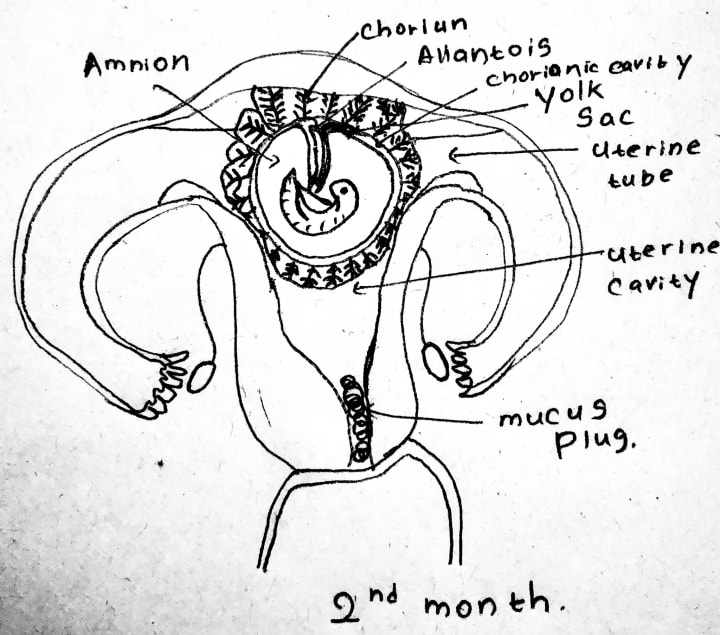
☘️Chorian-e chorion is a membrane that surrounds a developing fetus in conjunction with the amnion. The chorion plays a key role in the exchange of blood and gases between mother and fetus and functions to eliminate fetal waste
🌱🌱Different between fetus and embryo
🍃Embryo- The embryonic stage happens first and lasts through week 10
🍃Fetus -The fetal stage comes next and lasts from the end of week 10 until you give birth
About the Creator
Kayla walker
Come share knowledge
Enjoyed the story? Support the Creator.
Subscribe for free to receive all their stories in your feed. You could also pledge your support or give them a one-off tip, letting them know you appreciate their work.






Comments
There are no comments for this story
Be the first to respond and start the conversation.